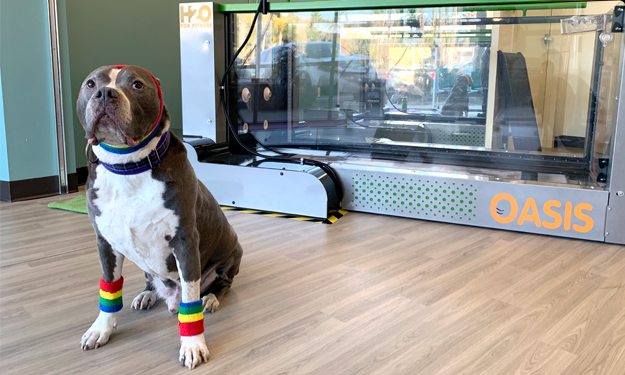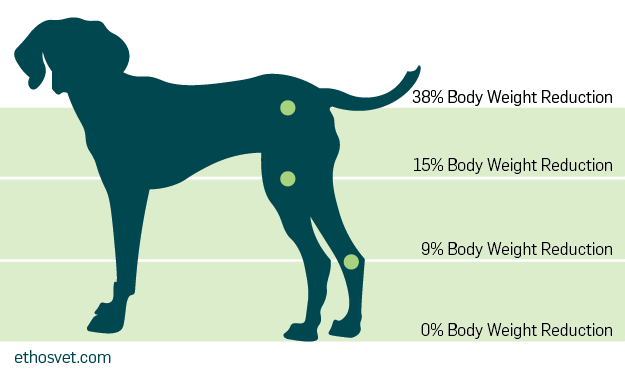Hydrotherapy

Hydrotherapy provides many benefits for our rehabilitation patients. Hydrotherapy uses buoyancy, resistance, viscosity, and hydrostatic pressure to help an animal move injured or arthritic joints through water. The buoyance of the body in water lowers their body weight, thus lowering the stress on joints. The resistance of walking through the water provides most of the work, while lifting a limb and breaking the surface tension of the water provides an additional challenge. Some animals that are weak can benefit from the hydrostatic pressure of the water providing support in a standing position.
The specific level of the water can increase or decrease the overall load on the joints. With lower strain on injured, healing, and arthritic joints/ bones, we can facilitate weight bearing exercise with more comfort. There are some conditions that are contraindicated for underwater treadmill exercise. We will communicate any concerns with your regular veterinarian prior to your initial consultation and therapy sessions.

Hydrotherapy is Used in the Treatment Of:
- Post-Operative Recovery
- Neurologic conditions
- Degenerative Myelopathy
- Osteoarthritis
- Geriatric Patients
- Obesity
- Conditioning for sporting dogs
Benefits
- Improves range of motion of joints
- Increased weight bearing of affected limb(s)
- Improved stability and proprioception
- Improve endurance
- Decrease pain
- Weight reduction
- Improve psychological well being
Nearly all dogs will learn to walk on the underwater treadmill. It is unusual that a dog will not adapt and learn to enjoy their sessions. We will assist your pet into the empty chamber with a harness and sling, if indicated. The warm water will rise from the floor up and slowly submerge them to the indicated level. For more nervous pets, we may remain in the chamber during the session. Some smaller dogs will require the therapist to remain in the tank for safety.
Each pet will start with a short, slow session about five minutes in length. Sessions are increased gradually, based on how well the pet is progressing. Our goal for each pet is reach 20 minutes per session.
Pet owners are encouraged to be present during all portions of their pet’s rehabilitation sessions.